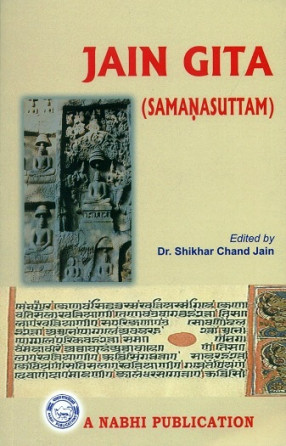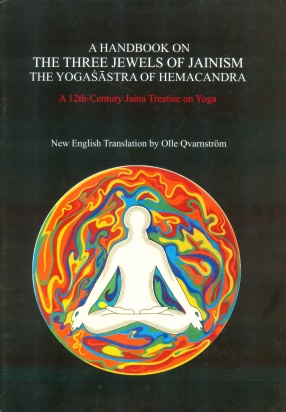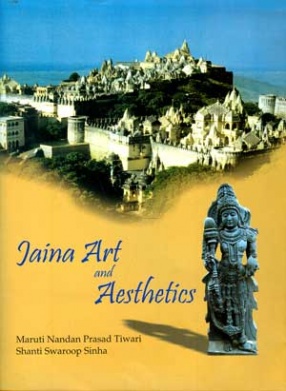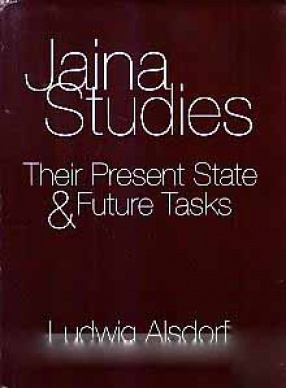Jain Gita (Samanasuttam)
In ancient India there were two religious traditions - the Shrmana (Srmana) and the Brahmanas tradition. The Brahmana tradition was related to Vedic followers having complete faith in rituals. They worshipped and meditated upon several gods and performed rituals for the attainment of their desired aims and emancipation after death, later on liberation from this mundane world became their main aim but rituals were the main means for their ambition achievement in the worldly life. Shrmana tradition was followed by the munis, yatis and sadhus and their pupils. Shrma means hard work- belief in Kgma (Purushartha). These shrmanas led their lives very simple. They penanced, had yoga, controlled their senses, were devout followers of JINA. Shrmana is attached with the virtues like shama - peace, sarnya - satisfaction, sauharda - fraternity. Thus they were the real ardent followers of human virtues with the same characteristics of Jainism. The Jains believe that their religion is eternal and when the third time period and Bhogabhumi was at the verge of ending and the advent of Karmabhurni had started at that very time the first Tirthankara Lord Rshabha (Tirthankara Adinath) was born to last Manu the most venerable Shri Nabhiraya and Pujya Mother Marudevi. Lord Rshabha - Puru Deva (Lord Adinath) is the first Tirthankara of this age and Lord Mahavira is last twenty fourth Tirthankara of this age (Yuga). Rshabha Deva the lord of the three worlds (the most venerated Lord Adinath) had vehement austerity for several years and attained omniscient knowledge (Kevalagyana) the Alpervading knowledge simultaneously (Yugapata) of all the three worlds past, present and future of all the three Lokas (worlds), the hell, the middle and the upper region - lokas and all the substances with their modes. He preached Non-violence (Ahimsa) and laid the path for leading a good life and .how to live in the world concentrating on their daily life style. He attained liberation (Nirvana) after completing his life span. Now these Munis, Yatis, Rshis and Sadhus meditated upon their souls and attained complete only knowledge, Jain teachings discourses of the Tirthankaras and produced several scriptures in Prakrta language. Jinendra Varni the devout kshullaka had a keen desire to bring out such a book that would fulfill the need of the readers about Jain religion and Jain philosophy at one place and, that would acquaint them with the tracts and tenets of Jainism like Shrimadbhagavatagita, the Bible and the Qurana. Thus Shri Jinendra Varni collected 756 prakrta gathas from various Jain scriptures of the shrmanas comprising from all the Jain sects. The book was named as 'JINADHAMASARA'. In no time, the book for its subject matter, illustration and clarity became extremely popular among the masses acceptable to all the Jain sects. Vinoba Bhave being influenced by this book called upon a VACHNA of this book in 1974 in Delhi attended by about three hundred scholars. Every gatha was read, discussed and with the consent of all the scholars the book was named as the SAMANASUTTAM. We are pleased to publish the SAMANASUTTAM in the name of JAIN GITA (Samanasuttam) for the benefit of the people wishing to penetrate into Jain philosophy and at the same time suggestions are welcomed to make the book more approachable. Thus a long cherished desire has been fulfilled with this book 'The Jain Gita' for getting all the aspects of Jainism at one place thus proving a boon and solace to the spiritually starved world.
Get it now and save 10%
BECOME A MEMBER







Bibliographic information